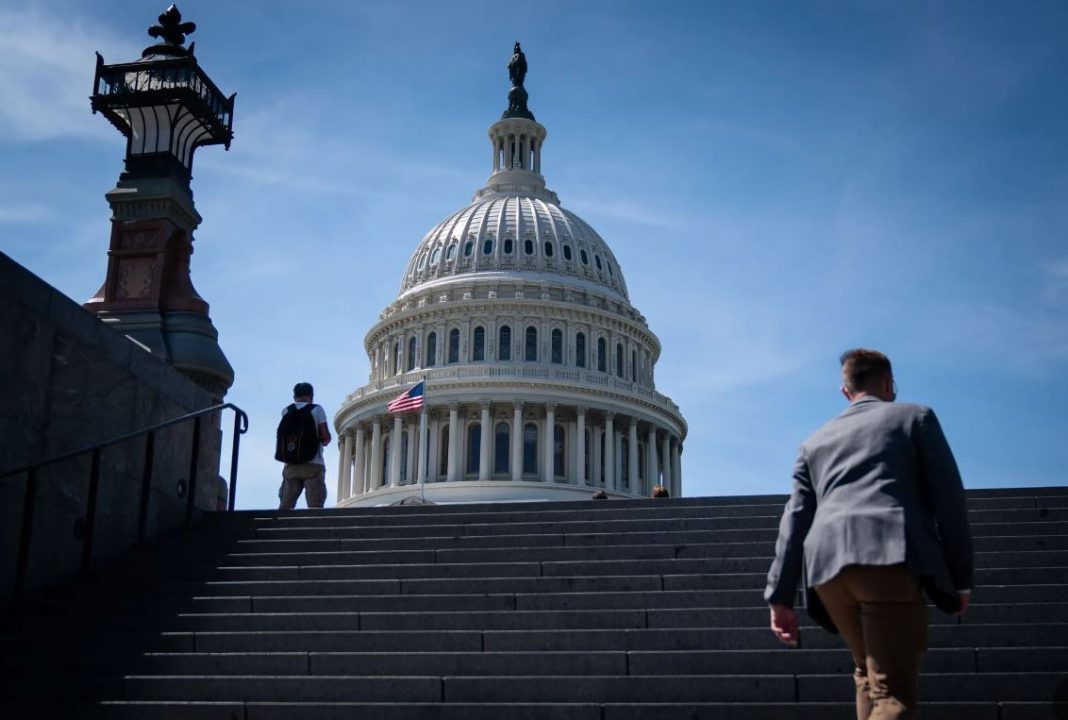On Monday, the United States’ total debt was officially above $33 trillion, a sobering reminder of the country’s precarious economic trajectory as Washington braces for another potential government shutdown this month over federal spending.
The milestone was highlighted in the Treasury Department’s daily update on the nation’s balance sheet. It occurred when Congress’s attempts to finance the government by the September 30 deadline looked to be stalling. The United States will experience its first government shutdown since 2019 if Congress is unable to approve a dozen appropriations measures or reach an agreement on a short-term extension of federal funding at present levels.
As a means of extending funding until the end of October, House Republicans examined a short-term plan over the weekend that would decrease budget for most federal agencies and revive hardline Trump-era border efforts. However, the idea was certain to fail on Capitol Hill since Republicans could not agree on their demands and Democrats would not likely back any compromise reached by the GOP.
After much back-and-forth, both parties came to a deal to temporarily lift the debt ceiling for two years and reduce government spending by $1.5 trillion over ten years. This was accomplished by effectively freezing some money that was expected to rise next year and then restricting growth in expenditure to 1 percent in 2025. As interest on the debt accumulates and the cost of the nation’s social safety net programmes continues expanding, the debt is on course to reach $50 trillion by the end of the decade, even if recently enacted expenditure cutbacks are factored in.
The price tag for certain Biden-era spending initiatives is anticipated to come in higher than first estimated. Due to high demand for the law’s significant renewable energy tax credits, the Penn Wharton Budget Model at the University of Pennsylvania forecasts that the Inflation Reduction Act of 2022 might cost more than $1 trillion over a decade.
The federal government is continuously spending money on pandemic response initiatives. The IRS reported last week that the cost to the federal government of paying out claims for the Employee Retention Credit, a tax benefit that was estimated to cost around $55 billion, had actually been closer to $230 billion. The IRS has put a hold on the programme out of an abundance of caution due to possible fraud and misuse.
However, there has been pushback against some of President Biden’s proposed tax increases.
A new tax regulation that would have required users of digital wallets and e-commerce platforms to begin reporting tiny transactions to the agency was postponed by the Internal Revenue Service until late 2023. Over a ten year period, the strategy was predicted to bring in an extra $8 billion in tax revenue.
The Internal Revenue Service this month postponed for two years a new rule that would prevent wealthy earners from contributing more to their 401(k) retirement plans. The lag time was blamed on a “administrative transition period,” according to the agency.
While this is going on, lobbyists are actively seeking exemptions from recently approved levies. To prevent wealthy corporations from paying tax rates in the single digits via the exploitation of loopholes, policymakers came up with the 15 percent corporate alternative minimum tax. The Treasury Department is presently creating the regulations that will govern the tax, but many of these businesses have been lobbying for exceptions to be made to protect their most treasured deductions. The United States is an exception to the trend towards a worldwide minimum tax, which this measure would not replace.
Budget watchdog organisations are more worried than ever that a fiscal catastrophe is on the horizon due to the resistance to attempts to boost income and decrease expenditure.
To avoid the immediate issue of a government shutdown, Republicans and Democrats in the House and Senate remain split on a road ahead, and legislators have begun calling for leaders to begin thinking on a temporary package to keep the government functioning until September 30.
According to a report released by the Treasury Department last week, the deficit (the difference between federal spending and tax and other income) was $1.5 trillion for the first 11 months of the fiscal year, a rise of 61% over the same time previous year.
Treasury Secretary Janet L. Yellen expressed confidence in the nation’s fiscal direction in an interview with CNBC on Monday, noting that interest costs as a percentage of the GDP remained reasonable. She did, however, stress the need to watch expenditure going forward.

